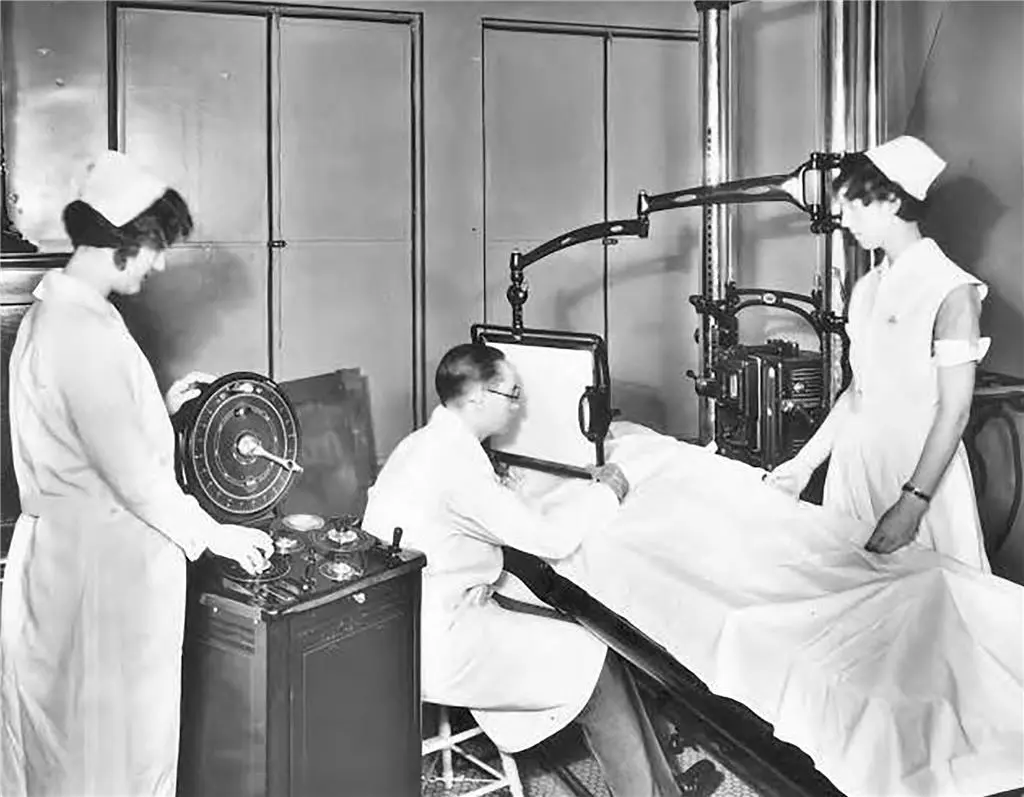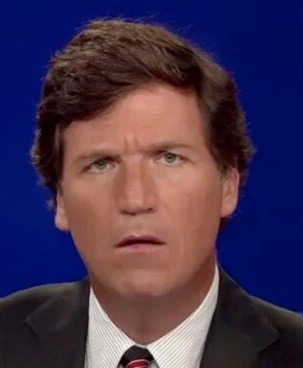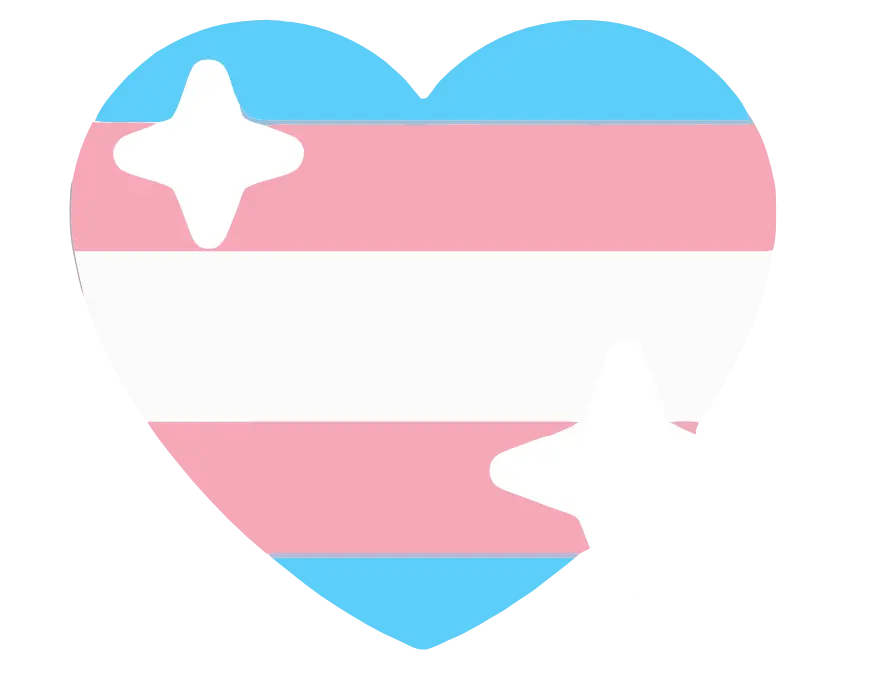“Each of us must take into account the raw material which heredity dealt us at birth and the opportunities we have had along the way, and then work out for ourselves a sensible evaluation of our personalities and accomplishments.”
Alan L. Hart (1890 – 1962) was a US American 20th-century physician, radiologist, disease researcher, and novelist who pioneered the use of x-ray in detection for tuberculosis. He spent the latter part of his career in public health, undoubtedly saving many thousands of lives across the country expanding tb services and education throughout rural areas. In 1917 Hart was one of the first people to undergo a gender affirming hysterectomy in the United States, and is the first documented case of a female to male transition in medical literature in the English speaking world.
“I had to do it. For years I had been unhappy. With all the inclinations and desires of the boy I had to restrain myself to the more conventional ways of the other sex. I have been happier since I made this change than I ever have in my life, and I will continue this way as long as I live’
interview with Hart about his hysterectomy
Hart begin expressing himself as a boy starting at least age 4, and was largely accepted by his family as male, with his grandfathers obituary in 1921 listing Hart as his grandson. A family friend of his stated in a 1921 interview “Young Hart was different, even then. Boys’ clothes just felt natural. Hart always regarded himself as a boy and begged his family to cut his hair and let him wear trousers. Hart disliked dolls but enjoyed playing doctor. He hated traditional girl tasks, preferring farm work with the menfolk instead. The self reliance that became a lifelong trait was evident early: once when he accidentally chopped off his fingertip with an axe, Hart dressed it himself, saying nothing about it to the family.” During childhood school, Hart wrote most of his assignments under his first chosen name of Robert Allen Bamford Jr.
Hart received a total of 4 degrees in his life. He received a pre med degree in 1912 from Portland, Oregon’s Lewis & Clark College, then known as Albany College, followed by a medicine degree doctorate from the University of Oregon Medical Department in Portland (now Oregon Health & Science University) in 1917. His doctorate was originally issued under "Hart, [deadname] aka Robert L., M.D.”. which prompted a legal name change in 1918. He took his first medical job at a Red Cross hospital at this point. In 1928, Hart received a master’s degree in radiology from the University of Pennsylvania and was named director of radiology at Tacoma General Hospital. After working for several years as a tuberculosis consultant in Washington and Idaho, Alan Hart moved with his wife to Hartford, Connecticut, where he received a master’s degree in public health from Yale University in 1948. Around this time, Hart began taking testosterone and is described as having a deeper voice and being able to grow facial hair as a result.
TUBERCULOSIS

Hart devoted much of his career to research and treatment of tuberculosis. By the dawn of the 19th century, tuberculosis—or consumption—had killed one in seven of all people that had ever lived. Throughout much of the 1800s, consumptive patients sought “the cure” in sanatoriums, where it was believed that rest and a healthful climate could change the course of the disease. In 1882, Robert Koch’s discovery of the tubercule baccilum revealed that TB was not genetic, but rather highly contagious; it was also somewhat preventable through good hygiene. After some hesitation, the medical community embraced Koch’s findings, and the U.S. launched massive public health campaigns to educate the public on tuberculosis prevention and treatment. TB usually attacked victims’ lungs first; Hart was among the first physicians to document how it then spread, via the circulatory system, causing lesions on the kidneys, spine, and brain, eventually resulting in death. With no cure for the disease in its advanced stages the only hope for sufferers was early detection.
X-rays, or Roentgen rays as they were more commonly known until World War Two, had been discovered only in 1895, when Hart was five years old. In the early twentieth century they were used to detect bone fractures and tumors, but Hart became interested in their potential for detecting tuberculosis. Since the disease often presented no symptoms in its early stages, X-ray screening was invaluable for early detection. Even rudimentary early X-ray machines could detect the disease before it became critical. This allowed early treatment, often saving the patient’s life. It also meant sufferers could be identified and isolated from the population, greatly lessening the spread of the disease. By the time antibiotics were introduced in the 1940s, doctors using the techniques Hart developed had managed to cut the tuberculosis death toll down to one fiftieth of what it had previously been.
In 1937, Hart was hired by the Idaho Tuberculosis Association and later became the state’s Tuberculosis Control Officer. He established Idaho’s first fixed-location and mobile TB screening clinics and spearheaded the state’s war against tuberculosis. Between 1933 and 1945 Hart traveled extensively through rural Idaho, covering thousands of miles while lecturing, conducting mass TB screenings, training new staff, and treating the effects of the epidemic. An experienced and accessible writer, Hart wrote widely for medical journals and popular publications, describing TB for technical and general audiences and giving advice on its prevention, detection, and cure. At the time the word “tuberculosis” carried a social stigma akin to venereal disease, so Hart insisted his clinics be referred to as “chest clinics”, himself as a “chest doctor”, and his patients as “chest patients”. Discretion and compassion were important tools in treating the stigmatised disease.
In 1943, Hart, now recognized as pre-eminent in the field of tubercular roentgenology, compiled his extensive evidence on TB and other X-ray-detectable cases into a definitive compendium, These Mysterious Rays: A Nontechnical Discussion of the Uses of X-rays and Radium, Chiefly in Medicine, still a standard text today. The book was translated into Spanish and several other languages
PBS - TB in America: 1895-1954
Join our public Matrix server! https://matrix.to/#/#tracha:chapo.chat
As a reminder, be sure to properly give content warnings and put sensitive subjects behind proper spoiler tags. It’s for the mental health of not just your comrades, but yourself as well. Here is a screenshot of where to find the spoiler button.



age dysphoria
I’m dooming rn, I convinced myself that 26 is too old to pass completely as a woman, even with HRT. Some people say it doesn’t do much anymore at my age, which I don’t fully believe but I’m still panicking over it. I’m afraid I’ll keep looking and sounding like a man forever.
I started at > 20 years older than you and i’m the happiest I have ever been in my life.
It really comes down to your DNA and dedication to healthy living so your body has its best chance of editing you. I WISH I could have done this much younger but i’m still extremely happy. If my body stopped changing today i would live the rest of my days happily as a woman.
Good luck, I hope you find happiness whatever you decide to do :)
That’s doomer shit if someone is saying HRT won’t do anything for you at 26, it’s fake. HRT works wonders, don’t be afraid to start
I know people your age who aren’t even on HRT yet, wear a 30$ amazon wig and still pass. The people who want to scare you with made-up nonsense about age limits are either purposefully doing that to gatekeep you or they are brainwormed idiots. Either of that is a bigger threat to living a happy life as a trans person than any physical limits you may or may not have.
spoiler
Totally common feeling, it’s not true at all. You know the darker side of this is that some people when they’re 20 think they’re too old to pass because they went through puberty. There’s no point being on this treadmill, step off and transition
I remember thinking about what it would have been like transitioning earlier. I don’t think I could have, I wouldn’t have survived middle school or high school and I don’t think I could’ve made it in uni and I had my ex to take care of at the time anyway. I transitioned exactly when I could have and when I was ready - which was also pretty close to 26 lol. I do remember lamenting that I could have been a hot early 20s bi woman in the early 2010s, oh the lost memories
I feel you, I don’t think I would have made it in high school either. That’s why I fantasize about transitioning at 19 instead.
I do that exact thing, like making up really specific scenarios of how I could have transitioned the instant I turned 18. I don’t think it’s a good thing for me though. I didn’t even realize I was trans at that point, so it wouldn’t have ever happened.
spoiler
I was this person when i started at 20. Glad I did it anyway.
Could I direct you to this this Hexbear post?
I got helpful responses when I was freaking out about the same thing.
spoiler
Also, I’m WAY older than you >.>
spoiler
Definitely not gonna be an issue. Your body is just as sensitive to hormones now as it was 5 years ago. You could have secondary effects like coarser facial hair that’s more annoying to get rid, and if your unlucky some hair loss that’s not reversible, but the age itself isn’t gonna hold you back.
I started hormones (slightly) later than that, and it only took about half a year before I could go out fem in public without ever getting misgendered by strangers or getting weird looks.
In a vacuum, I don’t think it’s bad to think about whether you’ll eventually be able to pass or not before you start transitioning, because it will affect your life in a major way, but it VERY easily devolves into this self-destructive mode of thinking where you’re just making up reasons why you won’t pass (like being 26 lol), so try to be gentler to yourself if you do
spoiler
it’s nonsense that there’s some specific cutoff that’s “too late” - there was a woman at a support group i used to go to who started her transition in her 60s and she was gorgeous, so i think you’re more than fine at 26
spoiler
i started at 31, it’ll be fine
you should probably spoiler this though
I wanted to spoiler, I just forgot.
But why does your comment need a spoiler? You only said how old you were when you transitioned
better to use them more than less i feel
it is also related to your spoiler anyway so
I’m in my late 30s and started at 34. I’m fine and you’re fine. 26 is a fine age to start. Some of us don’t start til way later and are just fine.
I’ve seen HRT before and afters of people who started at 60 and they passed completely. You’re going to be fine.
spoiler
I worry about not being able to pass too :meow-hug: we won’t know unless we try though.
I started at 29
It’s been almost four years, and I promise, the results are fantastic. 10/10 no regrets 👍
If it helps, you might want to peek at /r/TransLater to see people who are transitioning in their thirties and later